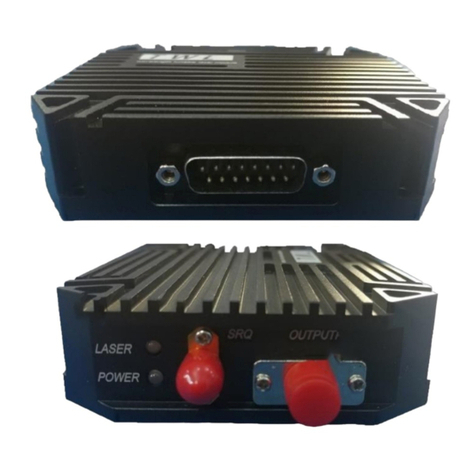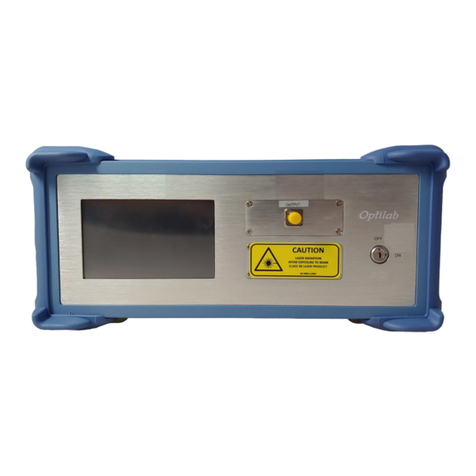Optilab, LLC
600 E. Camelback Road, Phoenix, AZ 85012
Phone: (602) 343-1496, Fax: (602) 343-1489, Email: sales@oequest.com
1. General Information
1.1. Introduction
This manual contains information on the installation and operation of the TWL-
P-HS High Speed Tunable Wavelength Laser demonstration purposes.
1.2. Product Overview
The TWL-P-HS is a high speed, innovative, all-in-one tunable and
programmable laser source with high spectral purity. Based on laser crystal
technology, the TWL-P-HS can operate in three distinct modes: CW mode,
continuous scan mode, and programmable scan mode over the entire C-band
range. It also features variable scan speed up to 4000 nm/s. Its lightweight and
compact design allow it to be easily utilized both in laboratory and field
engineering applications. A built-in 7” touchscreen with intuitive graphical
interface gives the user full control over the operation of the device. In addition,
the TWL-P-HS can be controlled via remote software through USB or Wi-Fi. Its
polarization output and high wavelength and power stability make it a perfect
solution for a seed laser for optical modulation and other test and measurement
applications.
1.3. User Safety
1. The TWL-P-HS unit emits high intensity invisible light from the optical output
receptacle. Avoid direct exposure to skin and eyes.
2. The user should never open the equipment case; any attempt will void the
warranty and may result in electric shock and EMS attack to equipment in the
vicinity. If requesting to open up the unit for demonstration purposes, please
contact Optilab prior to doing so.
3. The user should avoid using any solvent or vaporizing chemical to clean the
equipment panel or case. It may result in damage to the surface and internal
circuits.





























